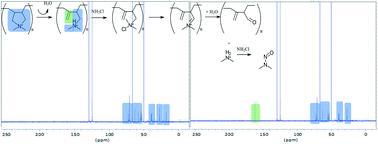当前位置:
X-MOL 学术
›
Environ. Sci.: Water Res. Technol.
›
论文详情
Our official English website, www.x-mol.net, welcomes your
feedback! (Note: you will need to create a separate account there.)
Nuclear magnetic resonance enables understanding of polydiallyldimethylammonium chloride composition and N-nitrosodimethylamine formation during chloramination
Environmental Science: Water Research & Technology ( IF 3.5 ) Pub Date : 2021-4-13 , DOI: 10.1039/d1ew00091h Samantha Donovan 1 , Ariel J. Atkinson 2 , Natalia Fischer 2 , Amelia E. Taylor 3 , Johann Kieffer 4 , J. P. Croue 5 , Paul Westerhoff 2 , Pierre Herckes 1
Environmental Science: Water Research & Technology ( IF 3.5 ) Pub Date : 2021-4-13 , DOI: 10.1039/d1ew00091h Samantha Donovan 1 , Ariel J. Atkinson 2 , Natalia Fischer 2 , Amelia E. Taylor 3 , Johann Kieffer 4 , J. P. Croue 5 , Paul Westerhoff 2 , Pierre Herckes 1
Affiliation

|
Polydiallyldimethyl ammonium chloride (polyDADMAC) is the most commonly used polymer at drinking water treatment plants and has the potential to form nitrosamines, like N-nitrosodimethylamine (NDMA), if free polymer is present during the disinfection process. The composition of polyDADMAC solutions used at the industrial scale is not well understood and is difficult to analyze. This study used 1H and 13C nuclear magnetic resonance (NMR) to analyze the polymer solution composition. Both 1H and 13C NMR are powerful tools that allow study of trace impurities in the solution, structural information such as chain length, and reaction mechanisms. The information garnered through 1H and 13C NMR can be used to mitigate NDMA formation at drinking water treatment plants.
中文翻译:

核磁共振有助于了解氯化过程中聚二烯丙基二甲基氯化铵的组成和N-亚硝基二甲基胺的形成
聚二烯丙基二甲基氯化铵(polyDADMAC)是饮用水处理厂中最常用的聚合物,如果在消毒过程中存在游离聚合物,则有可能形成亚硝胺,如N-亚硝基二甲基胺(NDMA)。在工业规模上使用的聚DADMAC溶液的组成尚未被很好地理解,并且难以分析。这项研究使用1 H和13 C核磁共振(NMR)来分析聚合物溶液的组成。两个1 H和13 C NMR是强有力的工具,允许微量杂质研究在溶液中,结构信息,例如链长,和反应机理。信息通过1 H和13 C NMR可用于减轻饮用水处理厂中NDMA的形成。
更新日期:2021-04-27
中文翻译:

核磁共振有助于了解氯化过程中聚二烯丙基二甲基氯化铵的组成和N-亚硝基二甲基胺的形成
聚二烯丙基二甲基氯化铵(polyDADMAC)是饮用水处理厂中最常用的聚合物,如果在消毒过程中存在游离聚合物,则有可能形成亚硝胺,如N-亚硝基二甲基胺(NDMA)。在工业规模上使用的聚DADMAC溶液的组成尚未被很好地理解,并且难以分析。这项研究使用1 H和13 C核磁共振(NMR)来分析聚合物溶液的组成。两个1 H和13 C NMR是强有力的工具,允许微量杂质研究在溶液中,结构信息,例如链长,和反应机理。信息通过1 H和13 C NMR可用于减轻饮用水处理厂中NDMA的形成。











































 京公网安备 11010802027423号
京公网安备 11010802027423号